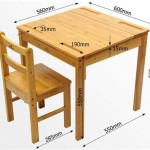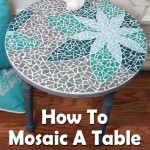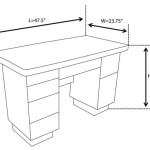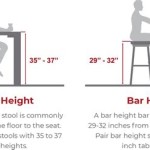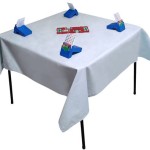Area Rug Under Dining Table Size: A Comprehensive Guide
Selecting the correct size area rug for under a dining table is crucial for both aesthetic appeal and functional performance. A rug that is too small can make a dining area feel disjointed and cramped, while one that is too large may overwhelm the space. The ideal rug size will anchor the dining set, define the area, and provide comfort underfoot while ensuring chairs can be easily pulled out and pushed back in without catching on the rug's edge.
This article provides a detailed guide to determining the appropriate area rug size for a dining table, considering factors such as table size and shape, room dimensions, and desired aesthetic.
Understanding the Importance of Proper Rug Sizing
The size of the area rug under a dining table is not simply a matter of personal preference; it directly affects the functionality and visual harmony of the dining space. A properly sized rug defines the dining area, creating a sense of cohesion and preventing the table and chairs from appearing to float in the room. It also contributes to acoustic comfort by absorbing sound and reducing echoes, making the dining experience more pleasant.
Functionally, the rug provides a comfortable surface for guests to walk on and protects the flooring underneath from scratches and wear caused by chairs being moved. A rug that is too small will not offer these benefits, as chairs will likely be partially or entirely off the rug when pulled out, creating an uneven and unstable surface. Conversely, a rug that is too large may extend excessively into adjacent areas, making the room feel smaller and potentially obstructing doorways or walkways.
Determining the Ideal Rug Size: Key Considerations
Several factors must be considered when choosing the right size area rug for a dining table. These include the dimensions of the dining table itself, the shape of the table, the size and shape of the room, and the desired aesthetic. By carefully evaluating these elements, it is possible to select a rug that perfectly complements the dining set and enhances the overall design of the space.
Dining Table Size and Shape
The dimensions of the dining table are the primary determinant of the required rug size. As a general rule, the rug should extend at least 24 to 36 inches beyond the edge of the table on all sides. This "buffer zone" allows enough space for chairs to be pulled out without their back legs falling off the rug. This rule applies regardless of whether the dining table is rectangular, square, round, or oval. For rectangular or square tables, the calculation is relatively straightforward. Measure the length and width of the table and add 48 to 72 inches (24 to 36 inches on each side) to each dimension. For example, a rectangular table measuring 60 inches by 42 inches would ideally be paired with a rug that is at least 108 inches by 90 inches.
Round and oval tables require a slightly different approach. For round tables, measure the diameter and add 48 to 72 inches to determine the ideal rug diameter. For oval tables, measure the widest points of the length and width and add 48 to 72 inches to each dimension, similar to the method used for rectangular tables. Keep in mind that standard rug sizes are typically rectangular, so selecting the closest available size that meets the minimum dimensions is often necessary. It’s worth looking at round rugs specifically for round tables.
Room Dimensions and Layout
While the size of the dining table is the most important factor, the dimensions and layout of the room must also be considered. In smaller dining rooms, a very large rug may overwhelm the space, even if it technically meets the minimum extension requirements around the table. In such cases, it may be necessary to compromise slightly on the size and choose a rug that is proportionally appropriate for the room. Consider how the rug relates to other furniture in the room, such as sideboards, buffets, or cabinets. The rug should ideally extend under the front legs of these pieces to create a cohesive and integrated look. Avoid positioning the rug so that it extends partially under furniture, as this can create a cluttered and disjointed appearance. If the dining room is open to other areas, such as a living room or kitchen, the rug can help define the dining space and visually separate it from the surrounding areas.
Aesthetic Considerations and Personal Style
Beyond the functional aspects of rug sizing, aesthetic considerations also play a crucial role. The color, pattern, and texture of the rug should complement the dining table, chairs, and overall decor of the room. A light-colored rug can brighten up a small or dark dining room, while a darker rug can add warmth and sophistication to a larger space. Patterned rugs can add visual interest and personality, but should be chosen carefully to avoid clashing with other patterns in the room. Solid-colored rugs are a versatile option that can work well with a variety of decor styles. The texture of the rug can also affect the overall feel of the space. A plush rug will add a sense of luxury and comfort, while a low-pile rug is more practical and easy to clean. Consider the style of the dining set and choose a rug that complements it. A formal dining set may be best paired with a traditional rug, while a modern dining set may call for a more contemporary design. Ultimately, the choice of rug should reflect personal taste and create a dining space that is both functional and visually appealing.
Common Rug Size Mistakes and How to Avoid Them
One of the most common mistakes in area rug selection is choosing a rug that is too small. This can make the dining area feel cramped and disjointed, and it also compromises the functionality of the rug, as chairs will frequently be partially or entirely off the rug when pulled out. To avoid this mistake, always measure the dining table and add at least 24 to 36 inches to each side to determine the minimum rug size.
Another common mistake is choosing a rug that is too large for the room. This can overwhelm the space and make it feel smaller and more cluttered. To avoid this mistake, consider the dimensions of the room and the placement of other furniture. The rug should not extend excessively into adjacent areas or obstruct doorways or walkways. It may be helpful to use painter's tape to mark out the dimensions of the rug on the floor before making a purchase.
Failing to consider the shape of the dining table is another frequent error. Using a rectangular rug under a round table, or vice versa, can create a visually unbalanced and awkward look. While some degree of flexibility is acceptable, it is generally best to choose a rug shape that complements the shape of the table. Consider the visual weight of the rug in relation to the table and chairs. A very bold or heavily patterned rug can overwhelm a simple dining set, while a subtle rug may disappear under a more ornate table. Choose a rug that complements the dining set without competing with it.
Ignoring the rug's material and pile height is another oversight. Rugs with high pile heights can be difficult to clean in a dining area, as they tend to trap food and spills. Low-pile rugs are generally more practical for dining rooms, as they are easier to vacuum and spot clean. Consider the material of the rug, as some materials are more durable and stain-resistant than others. Wool, sisal, and synthetic fibers like nylon and polyester are all good choices for dining room rugs.
Practical Tips for Measuring and Selecting the Right Rug
Before purchasing an area rug, take accurate measurements of the dining table and the room. Use a measuring tape to determine the length, width, and height (if necessary) of the table. Measure the dimensions of the room, including the distance from the table to the walls and other furniture. Consider the placement of doors and walkways to ensure that the rug will not obstruct them. Use painter's tape to mark out the dimensions of the rug on the floor. This will help visualize the rug's size and placement in the room. Experiment with different sizes and shapes to determine which works best.
Before making a final decision, consider purchasing a sample of the rug to see how it looks and feels in the space. This will also allow test for color accuracy, as colors may appear different under different lighting conditions. It's important to consider the rug's material and construction. Opt for a durable and easy-to-clean material that can withstand the wear and tear of a dining area. Choose a rug with a low pile height for easier cleaning and maintenance.
Online rug retailers often provide helpful tools and guides for determining the right rug size. Take advantage of these resources to ensure that the rug is a good fit for the dining table and the room. Read customer reviews to get feedback on the rug's quality and performance. Look for rugs that are fade-resistant, stain-resistant, and easy to clean.

Your Guide To Outdoor Rug Sizes Authenteak

What Size Rug Under Dining Table Here S The Best Way To Find Righ

My Favorite Rugs Under 100

Rug Sizes For Dining Tables 2 4 6 8 10 Seats S

Standard Rug Sizes The Right Sized For Every Room Jessica Welling Interiors

Rug Size Guide Boutique Rugs

Rules Of Thumb For Rugs Under Round Dining Tables Inspiration

What Size Rug To Use In A Dining Room Green With Decor

Rug Sizes For Dining Tables 2 4 6 8 10 Seats S

Rules Of Thumb For Rugs Under Round Dining Tables Inspiration


